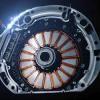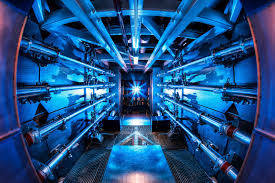
Breaking News
 2025-07-31 -- Ernest Hancock interviews Dr Phranq Tamburri (Trump Report) MP3&4
2025-07-31 -- Ernest Hancock interviews Dr Phranq Tamburri (Trump Report) MP3&4
 The BEST Healthy Granola Recipe | Easy, Crunchy & Naturally Sweetened!
The BEST Healthy Granola Recipe | Easy, Crunchy & Naturally Sweetened!
 The mitochondria are more than just the "powerhouse of the cell" – they initiate immune...
The mitochondria are more than just the "powerhouse of the cell" – they initiate immune...
Top Tech News
 "No CGI, No AI, Pure Engineering": Watch Raw Footage Of 'Star Wars'-Style Speeder
"No CGI, No AI, Pure Engineering": Watch Raw Footage Of 'Star Wars'-Style Speeder
 NASA's X-59 'quiet' supersonic jet rolls out for its 1st test drive (video)
NASA's X-59 'quiet' supersonic jet rolls out for its 1st test drive (video)
 Hypersonic SABRE engine reignited in Invictus Mach 5 spaceplane
Hypersonic SABRE engine reignited in Invictus Mach 5 spaceplane
 "World's most power dense" electric motor obliterates the field
"World's most power dense" electric motor obliterates the field
 The Wearables Trap: How the Government Plans to Monitor, Score, and Control You
The Wearables Trap: How the Government Plans to Monitor, Score, and Control You
 The Streetwing: a flying car for true adventure seekers
The Streetwing: a flying car for true adventure seekers
Magic mushrooms may hold the secret to longevity: Psilocybin extends lifespan by 57%...
 Unitree G1 vs Boston Dynamics Atlas vs Optimus Gen 2 Robot– Who Wins?
Unitree G1 vs Boston Dynamics Atlas vs Optimus Gen 2 Robot– Who Wins?
 LFP Battery Fire Safety: What You NEED to Know
LFP Battery Fire Safety: What You NEED to Know
 Final Summer Solar Panel Test: Bifacial Optimization. Save Money w/ These Results!
Final Summer Solar Panel Test: Bifacial Optimization. Save Money w/ These Results!
Laser-powered fusion experiment more than doubles its power output

In recent attempts, the team at the U.S. Department of Energy's National Ignition Facility (NIF) increased the yield of the experiment, first to 5.2 megajoules and then again to 8.6 megajoules, according to a source with knowledge of the experiment.
The new results are significant improvements over the historic experiment in 2022, which was the first controlled fusion reaction to generate more energy than the it consumed.
The 2022 shot generated 3.15 megajoules, a small bump over the 2.05 megajoules that the lasers delivered to the BB-sized fuel pellet.
None of the shots to date have been effective enough to feed electrons back into the grid, let alone to offset the energy required to power the entire facility — the facility wasn't designed to do that. The first net-positive shot, for example, required 300 megajoules to power the laser system alone. But they are continued proof that controlled nuclear fusion is more than hypothetical.
The NIF uses what's known as inertial confinement to produce fusion reactions. At the facility, fusion fuel is coated in diamond and then encased in a small gold cylinder called a hohlraum. That tiny pellet is dropped into a spherical vacuum chamber 10 meters in diameter, where 192 powerful laser beams converge on the target.
The cylinder is vaporized under the onslaught, emitting X-rays in the process that bombard the fuel pellet inside. The pellet's diamond coating receives so much energy that it turns into an expanding plasma, which compresses the deuterium-tritium fuel inside to the point where their nuclei fuse, releasing energy in the process.
The other main approach to fusion, magnetic confinement, uses powerful superconducting magnets to compress and contain plasma in a space tight enough to create the conditions necessary for fusion. While no magnetic confinement experiments have produced net-positive results, several are being constructed or designed with the expectation that they'll hit that milestone.

 MAGA Turns On Trump Over Gaza
MAGA Turns On Trump Over Gaza

